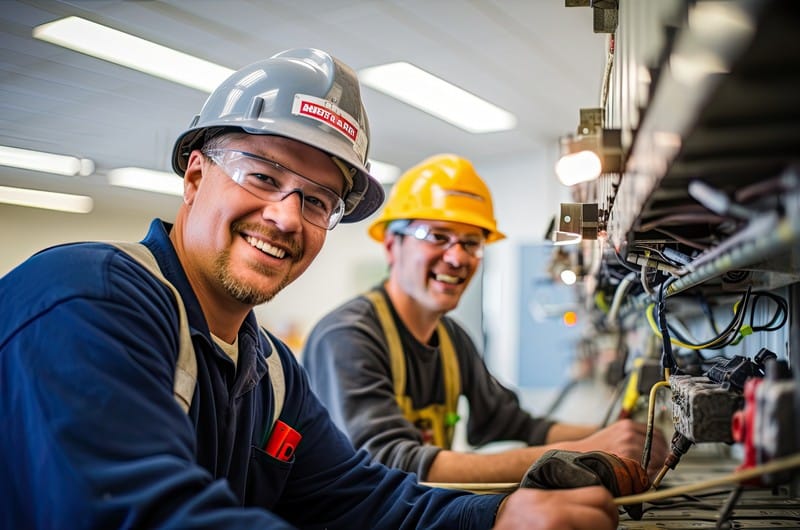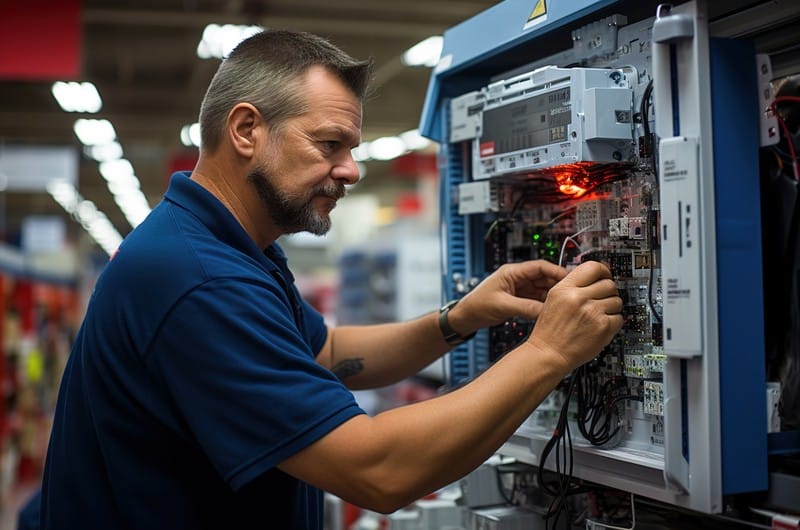 A Fire Safety Checklist for the Christmas Season
A Fire Safety Checklist for the Christmas Season

A roaring fire, cinnamon-scented candles, Christmas dinner and beautiful decorations: these might be some Christmas favourites that a lot of people hold dear, but they can also be the unfortunate reason that Christmas is the most likely time of year for household fires.
Here is a simple guide to reducing fire risk and keeping everyone safer this festive season…
Sockets
From electric blankets and heaters to fairy lights, Christmas often puts particular strain on the sockets around your house and work. It’s best to avoid overloading sockets as this can lead to overheating and electrical fires.
A very simple habit to get into which can reduce risk effectively is simply to visibly check electrical items, ensuring there are no loose cables or visible damage to items. This is especially important for Christmas lights which may have been stored away and folded or rolled in a way which can lead to wires being exposed.
Decorations
Christmas decorations, from cards to tinsel, are an important part of getting that festive feeling going in your home or workplace, but that doesn’t mean you should pop them up wherever there’s space. Avoid putting Christmas cards or other particularly flammable decorations near heating, lighting, cooking appliances or candles. Similarly, you should not hang anything from your fireplace. We don’t know where Christmas stockings hanging over an open fire started, but it’s not the best of ideas.
Double-check your fairy lights have the British Standard Kite Mark displayed on them and never use any decorations or electricals that have worn or frayed wires. If you’re unsure about the safety or reliability of an item, buy new ones. When you leave a room, especially for an extended period of time like overnight, make sure you turn off all electricals at the plug. (i.e., Turn of the Christmas lights and decorations both indoors and out).
When choosing Christmas lights, it’s best to switch the LED lights rather than traditional filament bulbs. LED lights operate at low voltage which reduces the risk of electric shock and they also generate far less little heat which greatly reduces the risk of fire.

If candles are a non-negotiable part of Christmas for you then consider battery-powered candles as a safe alternative that will still provide that all-important cosy ambience. Alternatively, if you just can’t say goodbye to that spiced apple scent and warming glow, make sure you only light a candle when you will be staying in the room and ensure it is placed away from flammable materials such as tissues or overhanging decorations. Also be wary of candles wrapped in ribbons or decorations, as these will catch fire when the candle burns down. NEVER leave a candle lit when no one is around to keep an eye on it.
Cooking
Having friends and family gather around the table for Christmas dinner is one of the highlights of the season. Luckily, there are a few things you can do to make sure this goes off without a hitch.
Before you start cooking, it’s helpful to jot down a plan of timings, when things need to go on and be taken out of the oven or off the heat. Not only will this help to reduce stress while cooking, but it will also reduce the chance of burning food and having to leave hot fats, boiling water and burnt food unattended. Similarly, you should be aware of what’s going on inside your oven throughout cooking. If you have to leave the room, ask a family member to keep an eye on everything for you.
As tempting as it might be, try and avoid drinking alcohol until you finish cooking, after which you can settle down with a glass of your favourite and well-earned tipple.
While Christmas is a time for family, when you’re cooking it’s important that all your attention is on that task. Don’t play games or open presents while cooking as just a moment’s distraction can see a fire started.
In the event of a fire breaking out in your kitchen, having a fire blanket at-hand is a must. It’s also important to know the different types of fires and the best kind of fire safety equipment to use in each case. For example, never throw water on a grease-based fire, instead use a fire blanket.
Christmas Trees
Putting up the Christmas tree is a much-loved tradition with a lot of people as it’s usually the point at which we bring Christmas into our home or workplace. However, there is a reason they have been singled out as one of the most common fire hazards by fire departments around the country.
When choosing your tree, there are a few tips and tricks to get the best one. Don’t buy a tree that is pre-wrapped as there is no way to know what you’re getting. When you find a tree you like the look of, tap the trunk a few times on the ground and if a lot of needles fall off then it’s not the one for you as it has already dried out, and that makes it more likely to catch fire if lights overheat.
Christmas trees can be particularly dry in general, especially when not kept in water. An average 6ft tree can drink up to two pints of water a day so make sure to stand your tree in plenty of water and top it up daily even if it has no roots!
Alarms and Equipment
Indeed, while preventing fires is key, it’s also imperative to have all alarms and equipment ready and working effectively should the worst happen. Now is the time of year to double check that your fire extinguishers and fire blanket are up to date and that your smoke alarms are tested regularly and have fresh batteries in (or spares to hand just in case)


